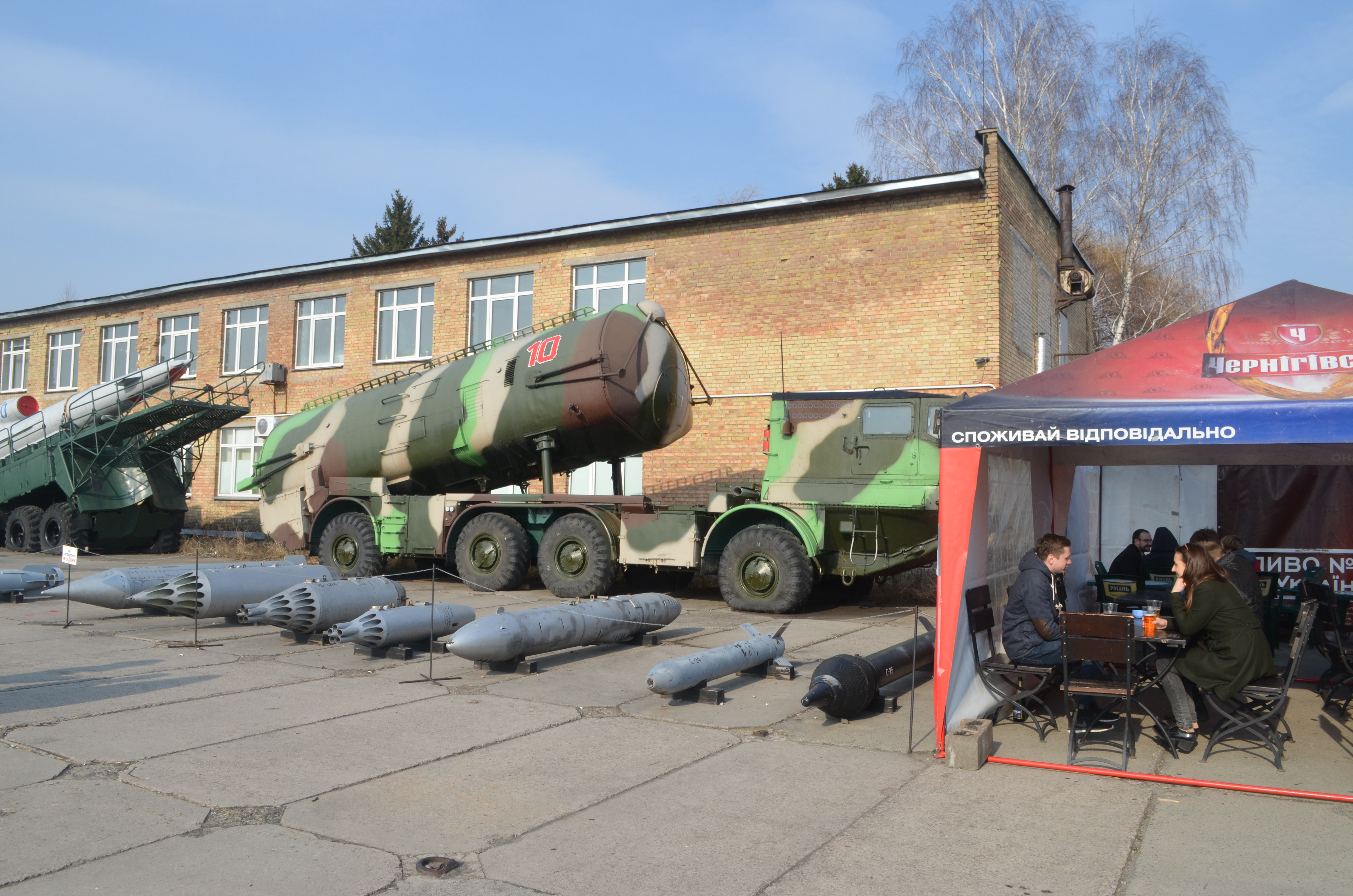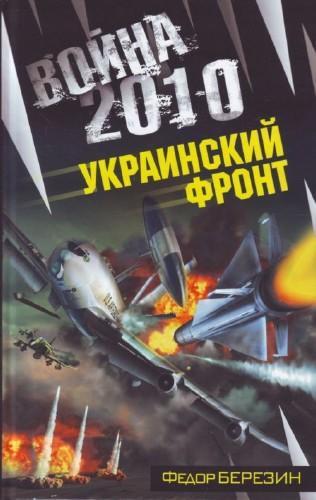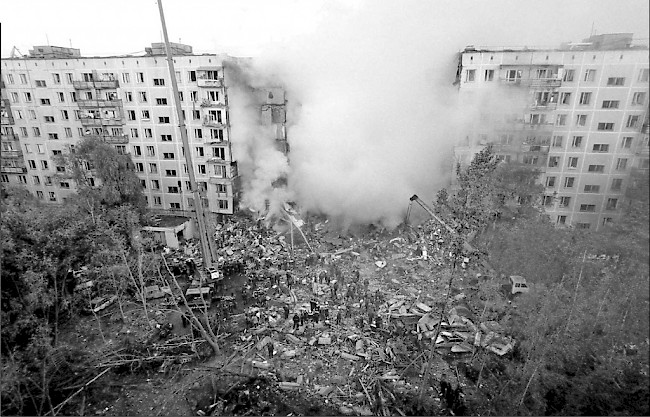— The Arts for the Global Conflict: A 2115 Report

As our civilization is engulfed by the Second Global Conflict, let’s pause for a moment to remember some overlooked episodes from the first decades of the twenty-first century, just before the First Global Conflict (GCI) started nearly a hundred years ago.
To understand our current crisis, the violent years leading up to the outbreak of the First Global Conflict need to be scrutinized in a more substantial manner than academics and authors alike have done. Historical science on both the Western and the Eastern flanks of our civilization has recently suffered a major blow when the two books largely believed to be accurate historical records of the first decades of the twenty-first century (Vladimir Sorokin’s 2013 Telluria and Michel Houellebecq’s 2015 Soumission [Submission]) were proven to be merely works of fiction by novelists. This discovery shook the very foundations of what we understood of the “postmodern” era preceding the First Global Conflict.
Numerous scholars have argued that the visual artists, fiction writers, and graphic designers of the postmodern period overprogrammed the political discourse of the era to such an extent that their work became inseparable from the historical facts known about the time. This led to scandalous misconceptions, the most famous being that until three years ago, the official French historiography claimed that the presidential election in France in 2022 was actually won by Mohammed Ben Abbes, the leader of the so-called Muslim Fraternity. This is just one of many discoveries that challenged our historical understanding of what caused the First Global Conflict. It is well known how the Great Cloud Collapse and the Big Data Doomsday of the mid-twenty-first century irreparably destroyed the sources of our historical knowledge. However, some offline data that survived these digital disasters allows us to separate fact from fiction in a more credible way.
Newly discovered facts continuously complicate our vision of GCI, the historical disaster that put humanity on the verge of extinction. Until now, it was understood simplistically as a result of the so-called Terror Wars that engulfed the Middle East, the Mediterranean region, and then the North European Union during the first decades of the twenty-first century. But innovative historical research is now beginning to prove that numerous other conflicts—lasting or frozen—contributed to our civilization’s gradual slide into violent chaos.
For instance, the long-overlooked case of New Russia (or Novorossiya) is still undeservedly ignored by mainstream historical science. New Russia is a political entity that emerged just outside the Eastern peripheries of the late European Union in the mid-2010s. The establishment of Novorossiya in the territories of Eastern Ukraine first seemed to be a sign of the resurgent global power of Russia. Soon, however, Russian regions adjacent to Novorossiya started to join the new statelet as an alternative to the increasingly dysfunctional Russian Federation. On a global stage, New Russia, perceived as an immediate military threat to the European Union, seems to have profited enormously from the simultaneous declaration of the Islamic State that had swiftly strained the Euro-Atlantic military powers. Some argue that now-forgotten New Russia shares a lot more in common with the infamous and well-researched Islamic State than just the dates of their founding in June 2014.1Both the Islamic Caliphate and Donetsk People’s Republic, which later developed into Novorossiya, were declared in June 2014.
As the wide historical consensus goes, the establishment of the Islamic State was a result of an unprecedented climactic cataclysm known as the Arab Winter. Some historians claim that this transformation of an entire region into a ghost land was caused by a sudden increase in CO2 emissions. However, some recently discovered sources prove that other factors have contributed to the rise of the Islamic State as well—in particular, the destruction of the state of Iraq by the so-called “coalition of the willing.”2 The list of participants in this coalition, as well as the question of its leadership, is still debated due to an extreme lack of reliable historical sources on that matter. Some ten years later, the invasion of Iraq was, in turn, used by the Russian Federation as a precedent and justification for the destruction of the Ukrainian state (as a result, Novorossiya was established). These two military campaigns are understood to effectively annul what was previously referred to as “international law.” When accused of violating international law during the invasion of Ukraine, the Russian leadership had implicitly and explicitly cited the Iraq War as a precedent for the historical declaration of the final death of what was called “international law.”
Neither the Russian Federation, nor the “coalition of the willing,” was eager to sustain the occupation of the lands that their armies allegedly liberated. As a result, both the Islamic State and New Russia are known to have become the pioneering modes of sovereignty and state-building in the early twenty-first century, marked by the ultimate collapse of nation-states and the gradual degradation of global powers. It is argued that their expansive, extraterritorial, and cross-identitarian nature became a new model for the “imagined communities” that followed in the twenty-first century. This is evident not only in the fundamentalist entities in the Third World (such as Boko Haram in sub-Saharan Africa, or the East Turkestan Caliphate in former Northwest China); some argue that the Republic of Texas, established in 2029, was modeled on the secessionist tactics successfully applied by the Russians in Novorossiya.
The creation of New Russia is usually attributed to the context of the so-called Ukraine Crisis, but the historical evidence regarding this chain of events remains controversial. New substantial historical studies have recently undermined the narrative that has become dominant in mainstream academic circles for decades. In particular, the commonly accepted justification for the Russian military invasion of Ukraine that started in the mid-2010s is now questioned. It seems that, contrary to the accounts of the Ukraine Crisis by such historians as Seumas Milne and Boris Kagarlitsky, the state of Ukraine was not actually governed by a neo-Nazi military government when Moscow sent its troops to protect the Russian-speaking population from alleged ethnic cleansing. It also appears that the term “Kiev junta” from the official historiography of the Ukraine Crisis is actually a misnomer. The government that came to power in Kiev as a result of the so-called Maidan coup was in fact largely civilian and unprepared to organize military action—to the extent that the Russian military occupation of the Crimean peninsula in 2014 took place without a single shot fired.

The intellectual history of New Russia—a major topic of scholarly fascination during the tumultuous years of the First Global Conflict—seems to require some revision as well. What excited scholars and the general public was a seemingly unprecedented blend of creative practice and political thinking among the founders and leaders of New Russia both before and after its foundation in 2014. Some of its early historians even referred to this entity as “the republic of writers.” Indeed, its founding father was the fiction writer Igor Girkin (who went by nom de guerre Strelkov): in the first installment of his memoir, The Birth of Novorossiya (2017), he claims that he went on his first military assignment in Ukraine immediately after completing his last fairy-tale novel. Unlike Girkin, who pursued a career as a teenage pulp-fiction writer before becoming a warlord, his comrade Fyodor Berezin entered the canon of New Russian literature as a writer of prophetic capabilities. His novel War 2030: Ukrainian Front (2010), written long before the start of the Ukraine Crisis, depicts this military conflict in such a detailed way that it gave birth to an influential “prophetic” movement in literature, whose authors were trying to depict their desired outcomes of current military conflicts while often fighting simultaneously on the frontline of a real or informational war. This literary movement proved an especially effective propaganda tool during the subsequent secession of a number of regions of the Russian Federation to Novorossiya.
In the era preceding the First Global Conflict, it was widely believed that all major social changes, like the many revolutions and uprisings of that period, were actually initiated or at least foreseen by the artists. This view is usually explained as a consequence of a crisis of political representation that was sharply felt across the globe in the early twenty-first century. With the mechanisms of representative democracy becoming increasingly privatized and alienated from the wider public, artistic representation developed an ambition to overtake the political imaginary. “Contributing to the conditions of representation after liberation—to the possibility of future history. Is that not the task of any cultural worker?” asked a 2014 editorial in a leftist political forum disguised as a monthly art journal.
Three years later an artistic event remembered as the Second New World Summit took place—an assembly of the members of organizations listed as terrorist groups by various countries. Allegedly, this was the first time in history that the functionaries of New Russia and the Islamic State met in person. According to some accounts, they held secret talks on the division of spheres of influence in the North Caucasus and formed a clandestine alliance against the Chechen president Ramzan Kadyrov. In the second installment of his memoir (The Spread of Novorossiya, 2020), Igor Girkin depicts how the two powers—the warriors of the Islamic State and the militant Orthodox Christians of Novorossiya—clashed over the control of the People’s Republic of Chechnya after Kadyrov was deposed in 2018.
It is impossible to ignore the fact that both the artistic and political imaginary of the early twenty-first century fell under the deep influence of Russian president Vladimir Putin. His first outright representation as a conceptual artist dates back to 2014, when artist Arseniy Zhiliayev first exhibited Putin’s works, which later entered the canon of what was at the time referred to as “contemporary art.” For example, his imprisonment of the members of the punk band Pussy Riot was reenacted by demiurge governors in various countries such as China, Egypt, Hungary, and Ukraine as their contribution to the global debate about precarious artistic labor and its discontents. Later on, the discovery of Putin’s early conceptual oeuvre revolutionized the understanding of his practice. Putin himself revealed this discovery in 2016 when he confessed on television that he had ordered the detonation of several residential blocks in Moscow in 1999, disguised as terrorist acts, to mobilize public opinion in his favor before ultimately coming to power. He has since declared these explosions his artistic magnum opus.

Finally, the creation of New Russia itself is commemorated by historical science as the ultimate expression of the individual will of a demiurge artist. All major historians of New Russia unanimously agree that it originates from a single performative act undertaken by Putin on March 18, 2014. On that day, during a speech at the national assembly celebrating the successful military invasion of Crimea, he reintroduced the word “Novorossiya” into the public vocabulary, where it had not existed for over a century. With this term, he referred to large parts of the then-territory of Ukraine that had belonged to the Russian Empire before 1917. According to the official historiography of New Russia, Putin’s word became material reality in a matter of weeks. The first documented attempts to attribute the invention of New Russia as a conceptual piece took place when the entity of New Russia expanded so fast that the Moscow government lost control of it: people’s republics in the regions of Rostov-on-Don, Voronezh, and Belgorod were declared and quickly joined Novorossiya through hastily organized referenda. It was stated at that time by Vladislav Surkov, Putin’s longtime collaborator and an artist himself, that the creator cannot be blamed for his work when it starts to live its own life.
Any short account of the history of ideas preceding the First Global Conflict is necessarily fragmented and superfluous, primarily because of the lack of reliable historical evidence from that era: The Great Cloud Collapse and the Big Data Doomsday have left us with very few verifiable sources regarding the historical period in question. It would be extremely difficult to reconstruct its political history without the knowledge of the artistic debates and controversies of the time. We should thus be thankful to all of the artists who lived through that troubled era.
×


